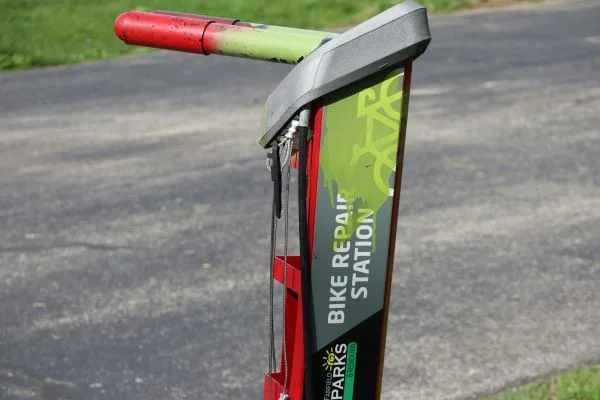Hybrid bike tire pressure is something you want to get right for safety, comfort and efficiency reasons. The recommended tire pressure will vary based on rider weight, terrain, and tire width. The ideal answer for hybrid bike tire pressure is around 50-80 PSI (pounds per square inch), but you should feel free to adjust based on your preferences.
The primary benefit of maintaining the correct tire pressure is improved rolling resistance. Underinflated tires tend to have higher rolling resistance, which means more effort is required to maintain speed. On the flip side, overinflated tires can lead to a harsh and uncomfortable ride, as well as reduced traction and control.
For most hybrid bicycles a tire pressure in the range of 50-80 PSI strikes a balance between comfort, performance, and efficiency. However, this range can be adjusted based on a few specific factors:
Rider Weight
Heavier riders may benefit from slightly higher tire pressures to prevent pinch flats and improve overall stability. Conversely, lighter riders may prefer slightly lower pressures for a smoother ride.
Terrain
Riding on rough or unpaved surfaces may warrant lower tire pressures to improve traction and absorb shocks. Smooth pavement may allow for higher tire pressures to minimize rolling resistance.
Tire Width
Wider tires generally allow for lower pressures compared to narrower ones. Hybrid bikes often come with tires ranging from 28mm to 40mm in width, and the optimal pressure may vary accordingly. As a sidenote, all bike tires will have a recommended PSI listed on the sidewall and these should always take preference over generalized figures.
Riding Style
Aggressive riders who prioritize speed and efficiency may opt for slightly higher tire pressures, while casual riders may prefer lower pressures for added comfort.
We recommend you experiment and find what works best for you. Start with the manufacturer’s recommended pressure range and make adjustments based on personal preference and riding conditions. A digital tire pressure gauge can help ensure accuracy when inflating your tires. There are also some pretty cool pumps available now which digitally inflate your tires to a very accurate PSI.
Checking and adjusting tire pressure is crucial for maintaining optimal performance and safety. Insufficient tire pressure usually lead to increased rolling resistance, decreased stability, and a higher risk of punctures, while excessive pressure can result in a very uncomfortable ride. As long as you’re inflating to the recommendation on the tire’s sidewall, feel free to experiment with what feels best for you.


